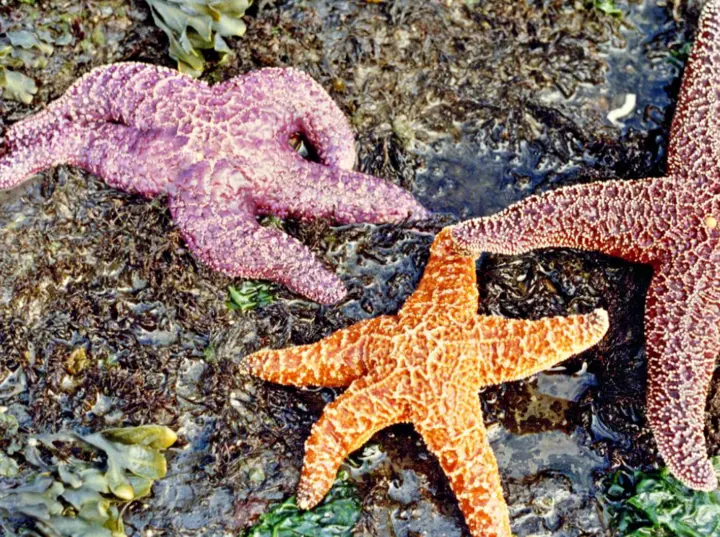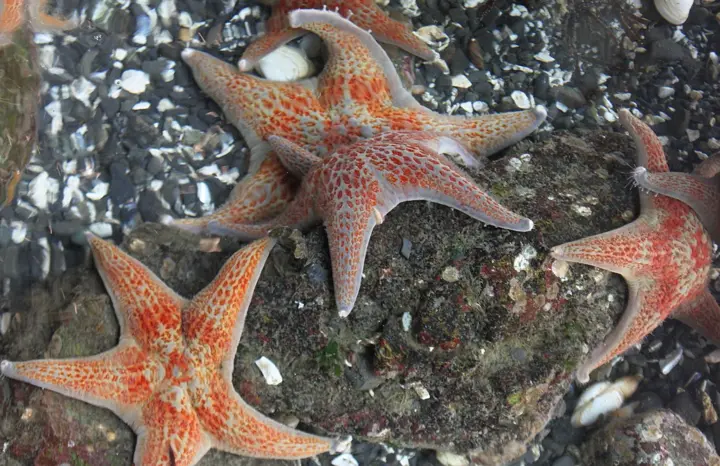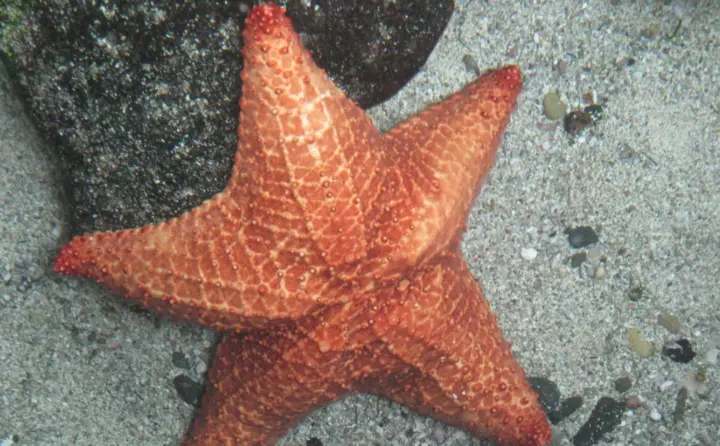The Ultimate Survivor: How Sea Stars Thrive in Harsh Conditions

The marine environment is one of the most difficult environments in which living organisms can live. Among the creatures that can withstand and thrive in these extreme conditions, sea stars are distinguished by their ability to survive and launch despite challenges. They are wondrous beings that deserve attention and appreciation. This article will explore how starfish adapt and thrive in extreme conditions, and how we can learn from their lessons.
Show key points
- Sea stars exhibit an extraordinary variety of shapes and colors, making them one of the most visually captivating creatures in the marine world.
- These marine animals are incredibly resilient, able to survive in environments with high salinity, extreme cold, and intense water pressure.
- One of the most remarkable abilities of sea stars is their capacity to regenerate lost body parts, a trait fueled by the presence of stem cells.
- ADVERTISEMENT
- Starfish serve as important environmental indicators, helping scientists assess the health and pollution levels of ocean ecosystems.
- Scientific research plays a vital role in conserving sea stars by studying their behaviors, adaptations, and ecological impact through advanced technologies.
- We can draw powerful life lessons from sea stars, including adaptability, perseverance, resourcefulness, and the value of teamwork.
- Sea stars inspire us with their ability to thrive in adversity, encouraging both personal growth and collective efforts to protect marine environments.
1. Multiple shapes and colors of starfish: a wonderful variety

Sea stars are marine creatures with a unique diversity of shapes and colors. We can find sea stars in different sizes and shapes, from small to large, ranging from round, flat, conical, pink, zigzag and other stunning shapes. These objects are also characterized by the variety of colors in which they appear. We can see sea stars in red, yellow, blue, white and even sparkling. The multitude of shapes and colors of sea stars gives them a special charm and makes them a unique and wonderful collection in the sea world. Whether found in reddish coral reefs or in the deep dark depths of the ocean, the beauty and diversity of sea stars deserve acclaim.
Recommend
2. Withstand extreme conditions: how do sea stars adapt to salinity, cold and high pressure?

Sea stars are magnificent creatures that live in a harsh marine environment that requires exceptional abilities to withstand many challenges. One of the most important of these challenges is the high salinity in marine water. Salt water can be harmful to most living things, but sea stars have evolved to adapt to these conditions.
In addition to salinity, sea stars must also endure extreme cold in the oceans. It lives in very cold regions that can be below subzero temperatures. Despite this, sea stars are able to adapt to this cold and live normally in these conditions.
In addition to salinity and cold, starfish are under tremendous pressure in the sea depth. Many species of starfish live more than 2,000 meters below sea level, where the pressure on living creatures is unbearably high. But sea stars have strong structures and resistance that enable them to withstand this high pressure.
So, it can be said that sea stars are amazing creatures with amazing abilities to adapt to the high salinity, extreme cold and high pressure of the marine environment. Their ability to survive and thrive in these harsh conditions makes them worthy of respect and recognition.
3. Unique properties: the secret to the renewal of sea star organs

Sea stars are unique creatures with amazing and attention-grabbing properties. One of these unique properties is its ability to unusually regenerate its organs.
In the animal world, organ renewal is rare and exceptional. But sea stars differ from other organisms in their ability to regrow parts of their body after they have lost them to external wounds or aggressions.
When a starfish loses a piece of its body, whether it is due to a predatory assault or a natural accident, this amazing creature regenerates the entire lost part. Instead of the missing part remaining permanently disabled, a new part grows fully and functionally, making the starfish regain its full abilities and functions.
This amazing ability of sea stars depends on the presence of what are known as "stem cells" in their bodies. These stem cells are a type of cell that has the ability to multiply and develop into different types of other cells in the body. Using these stem cells, a starfish can rebuild lost body parts, including arms, legs, and even internal parts such as intestines and nerves.
The secret of the replenishment of the organs of sea stars is considered unknown to scientists. However, understanding this amazing process may help us develop new techniques for organ regeneration in living organisms, including humans. The study of sea stars and their unique ability to regenerate can inspire scientists and researchers in the field of medicine and the biological sciences, and may have a positive impact on the progress of modern medicine.
In short, the ability of sea stars to regenerate their organs is one of the unique and amazing characteristics of these sea creatures. Understanding this process could contribute to the advancement of the biological sciences and has the potential to set an example in organ regeneration in other organisms, opening doors to new and innovative technologies in the medical and biological sciences.
4. Sea stars as environmental indicators: how do they help us understand the health of the seas and oceans?

Sea stars become important environmental indicators for understanding the health of the seas and oceans. These beautiful creatures are not only marine creatures of many colors and shapes, but also reflect the state of the environment in which they live. The use of sea stars as environmental indicators is a powerful tool for transmitting information about the health and pollution of oceans. Learn how sea stars can help us understand the health of the seas and oceans and what we can learn from them in this exciting subtitle.
5. Sea stars and scientific research: How do researchers contribute to the conservation of this unique organism?

In the marine world, sea stars are of interest to many researchers and scientists. These unique organisms have a lot to offer in understanding our oceanic environments and studying environmental changes. Scientific research on starfish plays a crucial role in the conservation of this organism and enhances our understanding of it and the environment in which it lives.
Researchers contribute to the conservation of sea stars by conducting scientific studies aimed at understanding their eating habits, lifestyle and the effects of environmental pollution on them. By collecting and analyzing data, researchers can determine the best actions to preserve and prevent degradation of starfish ecology.
Researchers are also studying the ability of sea stars to adapt to environmental changes, such as rising temperatures or ocean pollution. By understanding the adaptation methods of starfish, researchers can develop real-world strategies to protect these unique organisms and preserve marine ecosystems.
In addition, scientific research contributes to the development of new technologies for the observation and study of sea stars. Advanced technologies such as satellite imaging and marine robotics are used to collect and analyze data more accurately, contributing to our deep understanding of starfish life and environmental impacts on it.
In short, scientific research plays a vital role in preserving sea stars and enhancing our understanding of them. Researchers are studying their behavior, adaptation and environmental impacts, enabling us to take appropriate action to preserve this unique organism and prevent ocean and sea degradation. Thanks to their efforts, the world can enjoy the beauty and complexity of sea stars for future generations.
6. Lessons from sea stars: how can we benefit from their strategies in our lives?

Sea stars are creatures that are not just present in the marine environment, but also provide us with valuable lessons that we can draw and apply in our daily lives. Although she doesn't speak or think like humans, her amazing strategies can have a profound impact on our lives and our ability to adapt and succeed. Lessons from sea stars teach us the importance of adapting, being patient and persistent, and managing resources intelligently in difficult circumstances. Here are some lessons we can learn from starfish strategies:
First, adapt to the environment: Sea stars live in a harsh environment and adapt to temperature changes, salinity and high pressure. We can take advantage of their ability to adapt flexibly to the transformations around us and learn how to adapt and overcome adversity.
Second, resilience: Sea stars endure many difficulties and challenges, such as attacks, loss of organs, and changes in the environment. They remain able to continue and grow. We can take lessons from them in resilience and perseverance even in the face of difficulties.
Third, manage resources intelligently: Sea stars have a unique ability to regenerate lost parts of themselves. We can learn from them how to work smarter and make the most of the resources we have.
Fourth, take advantage of teamwork: Some starfish species live in huge aggregations called "fields," working together to improve survival and prosperity. We can draw inspiration from opportunities for collaboration and teamwork to achieve shared success.
Fifth, sustainability and environmental conservation: Sea stars play a vital role in balancing the marine environment and maintaining its health. We can use them to work to preserve and sustain the environment for future generations.
Sixth, beauty in diversity: Sea stars are characterized by their multiplicity of shapes and colors, and this diversity reflects the beauty of nature and reminds us of the importance of accepting and respecting differences in our daily lives.
Starfish teach us that even in extreme conditions we can thrive and succeed. We can draw on her lessons in adaptation and resilience, managing resources wisely, teamwork, sustainability and achieving diversity and beauty in our personal and professional lives. Let's be inspired by sea stars and strive to succeed in the face of challenges.

Ultimately, we must respect and appreciate the ability of sea stars to survive and thrive in extreme conditions. It reminds us that true strength lies in adaptability and endurance. We can learn from its lessons in our daily lives, and strive to face challenges with determination and strength. In collaboration with researchers and society, we can preserve the sea environment and preserve these unique creatures. Let's prepare to learn from sea stars and strive for success and prosperity in our lives.








